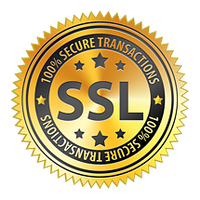This online snowboard lesson will go over Advance Snowboard Carving: Surfer Turns & Grab Carves. Surfer Turns can really lock you into your carves. When you watch Advance Surfers ride waves they grab their board with one hand and touch the wave wall with the other. I came up with Surfer Turns after I started grabbing my snowboard while riding. This is Advance Carving and you should go back and watch Basic Carving: Circle Drills and have that down before attempting Surfer Turns. You’ll have access to all our snowboard tutorials when you signup that cover every step and feedback from your coach. We also have some free snowboard videos to prepare for Advance Snowboard Carving on our YouTube Page. I recommend watching these snowboard videos; Building Rhythm, Advanced Snowboarding Getting Air, Snowboard Dynamic Flex & Extend, Active Passive Absorption, Upper/Lower Body Separation, Basic Carving: Circle Drills, Basics For Freestyle Features & Snowboarding Moguls Learn to snowboard online with flowingfreeride.com, Take FFR Placement Quiz, take a look at Our Blog for more free content, and learn to snowboard right!
Carving terrain should be nice and groomed with wide open trails. Be sure to Look Uphill to see if there’s traffic from other snowboarders and skiers coming down. Carving is when you’re using your sidecut and eliminate the pivot/rotation movement in your snowboard and body. You’re balanced on your edge with no skid. Carving can make you such a better and efficient rider. Grabbing your board makes you more solid. When watching freestyle you’ll notice that riders grab their snowboards for style points but also it keeps them solid and in balance. Surfer Turns and Grab Carves start to get you bending and flexing to have better flow and rhythm. It’s safer to grab while your on the ground and then you can progress up to grabs while in the air. This drill helps with your carving and speed but also with your freestyle. It looks pretty cool and helps your personal snowboard style.
When we start carving we’re following the same path, our front foot follows the same path as our back foot, the tail follows the nose. I’ve given some drills like the Circle Turns to help you start carving but now we’re moving past L2 Rider and accelerating up two L3 ripper. We want to do carve turns while we’re grabbing our board! Really the only couple grabs that you can do the whole time on toe and heel switching edges without smashing your fingers is either a nose or a tail grab. We can start out by just doing some turns that don’t have to be carves yet but trying to make some turns while you’re trying to grab your board. Reach down try to grab your tail, try to grab your nose, try to grab your toeside edge or your heelside edge. You’ll know that if you’re making S-turns you can only grab your nose or your tail. I know that’s yoga really helps out if you’re not being able to flex down and grab your board maybe get out and do some stretching and do some yoga before you’re attempting to do these grabs. After you’re getting a little bit more flexible there attempt grabs. The big key is being flexible you need to be able to reach down and grab the board. Take a run and do some do some turns where you’re grabbing your board, that’s the first thing you want to do. Take a run and try to try to make turns while you’re grabbing your board.
After grab turns get back into flowing carves. You’ll want to go warm up by taking a run where you’re carving on every turn. Get into that flow of ripping carves down the mountain. After you’re feeling good start to reach down and grab your snowboard while you’re carving. Do the heelside and toeside first and then nose and tail. Progress into multiple grabs and start adding some style by putting your hand in the air or in the snow while grabbing your snowboard. Lock in your carve at the end of your turn by pulling up your edge with your hand. Once you’ve got that start to grab your snowboard right as you transition edges or at the beginning of your turn and see how long you can Rip Surfer Turns and Grab Carves. when I’m doing a toeside turn I have to really reach around and grab that heelside edge it’s a little bit more difficult then grabbing your heelside but it really looks like you’re surfing!
Practicing Surfer Turns helps to develop flexible body movements for Alpine Riders but also Freestyle Riders. Being able to reach down and grab your board is a big part of moving from L2 Rider to L3 Ripper. It may take a while to get this down. Remember it’s all about flexibility so if you’re have difficulties grabbing your board do some yoga and workout at the gym. Hope to see you out on the slopes ripping Surfer Turns & Grab Carves! You can signup to get access to all of our snowboard lessons, study guides, textbooks, glossary, tests and direct feedback from your coach. Learn to snowboard online with flowingfreeride.com and take a look at our YouTube Page for more free content and learn to snowboard right! My name is Blake Tholen Clark contact me if you have any questions about Snowboarding.


